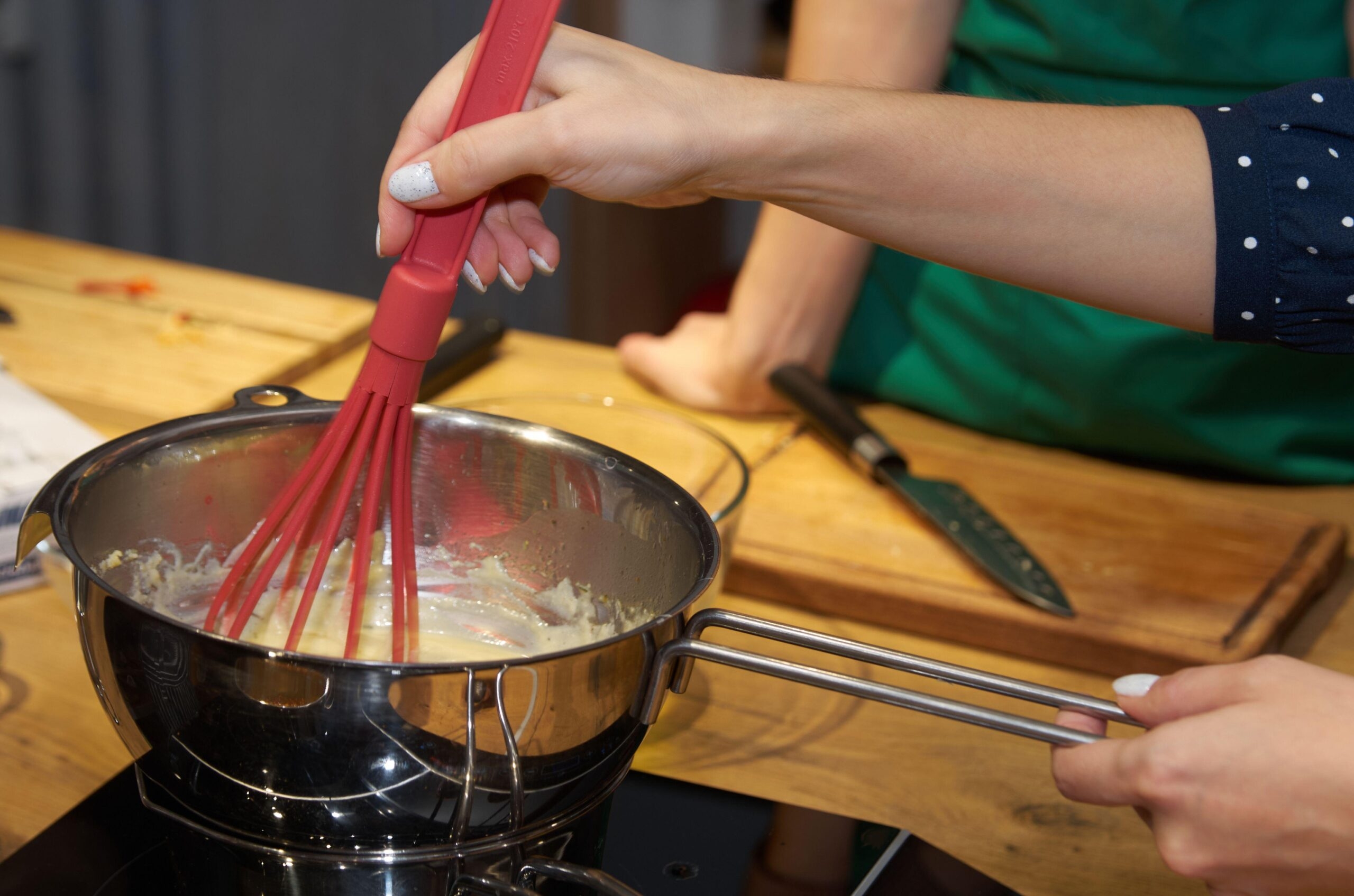features
Twisted chefs share biggest mistakes you’re making when cooking crêpes
14 Feb 2023
4m
With Pancake Day almost upon us, it’s time to brush up on how to make the perfect crêpes.
Whether you’re a pancake pro or you still need a little learning, listen up because Twisted‘s culinary team are here to help, answering all of your burning questions and offering some of their tips to ensure you get the best thin and crispy pancakes every time.
Whether you’re wondering what happens if you make pancakes with self raising flour or you whether you can make the batter ahead of time, we’re on hand to answer any crepe query you may have. Aren’t we nice?

Crêpes are easy to make if you know how (Credit: Alamy)
What happens if you make pancakes with self-raising flour?
“This results in a thicker, fluffier pancake, so is ideal for American style pancakes,” Spencer adds. However, for the perfect crêpe you might be better heading to the shops.
How to make the perfect pancake
If it’s a traditional thin and crispy crêpe you’re after this Pancake Day, look no further because we’ve got you covered.
READ MORE: Chocolate Chip Banana Buttermilk Pancakes
Here, the Twisted chefs share their tops tips on how to make the perfect pancake.
1. Grease your pan before cooking

Make sure your pan is lightly greased (Credit: Alamy)
Don’t you hate it when you go to flip your pancake and it clings to the pan?
To avoid your crêpe sticking, the best thing to do is make sure your pan is clean beforehand, and then grease it so that every inch is lightly oiled up before any batter hits it.
It’s also important not to whack the heat too high, as that can cause your pancake to stick. Medium to low heat should do the trick – patience is key!
2. You can make your batter the night before

Yes, you can make your pancake batter ahead of time (Credit: Alamy)
Whilst making American pancake batter the night before is a no-no (due to the leavening agents), the good news is crêpe batter allows a bit more time for preparation.
In fact, leaving it in the fridge to rest is a good thing, as it allows your flour to properly absorb into the liquid, resulting in a more even pancake – just make sure you bring it back to room temperature before cooking.
READ MORE: We tried The Rock’s cheat day pancake recipe and it was mind-blowing
In reality, you can leave your batter for one to two hours and still get a thin and crispy finish, but overnight (or even 48 hours) will do the job, too.
Plus, it means you don’t have to rush to make the batter on Pancake Day itself. We love forward planning!
3. Avoid over whisking the batter

Don’t whisk too much! (Credit: Alamy)
“Don’t be tempted to over whisk the batter, as this causes the flour to develop gluten and can make the pancakes tough,” says Spencer. “No one wants to lose a tooth eating a pancake!”
Instead, don’t fear the odd lump and just lightly whisk your ingredients before you cook with them.
“Whisk together the dry ingredients first to ensure theres no lumps, and then whisk the wet and dry until just combined.”
Nobody wants a claggy crêpe!
4. Wait for the pan to heat up

Cooking a crêpe can’t go wrong if you follow these tips (Credit: Alamy)
This is probably the most common mistake people make when cooking crêpes. When your batter hits the pan, ideally we want it to start cooking right away, which means you need your pan to be sufficiently hot before you start going.
If the pan is cold then the mixture won’t cook through properly and it will be difficult to flip, so this is really important.
Whilst you want to start with a pan that’s about 200 degrees centigrade, you can whack that heat down to a medium-low before you actually get cooking (as we said above, this avoids any uneven pancakes).
The crepe should only need one or two minutes in total (about 45 seconds on the first side and 30 on the second), but to ensure the process is as speedy as this your pan temperature is key.
5. Don’t flip it too early

Don’t flip it before it’s ready (Credit: Alamy)
The best indicator that it’s time to flip a crêpe is if bubbles form and the batter starts to crisp up slightly.
The shine on your crêpe batter should also be starting to disappear and the edges should start lifting from the pan. Basically, when your liquid batter has transformed into something more solid that’s your call to get flipping.
READ MORE: The best pancakes from around the world to honour Shrove Tuesday
Going any earlier than this will likely result in batter dribbling everywhere, so hold your horses and keep an eye out for the signs.
6. Try not to use too much batter

When it comes to batter, less is more (Credit: Alamy)
Don’t get trigger happy with your batter, folks. Add just enough that the surface of your pan is covered, but you should almost be able to see through the mixture.
Adding too much batter will turn your crêpe into a thicker pancake, which will still taste nice but most likely isn’t what you’re after.
It can also take much longer to cook if you add too much batter, and is the biggest cause of pancake flipping fails, as many people try to cook a crepe as per the instructions but find theirs hasn’t cooked through.
Pancake Day 2023 is on Tuesday, February 21.



.jpg_dU0O4c?tr=w-2560,f-webp,q-70)